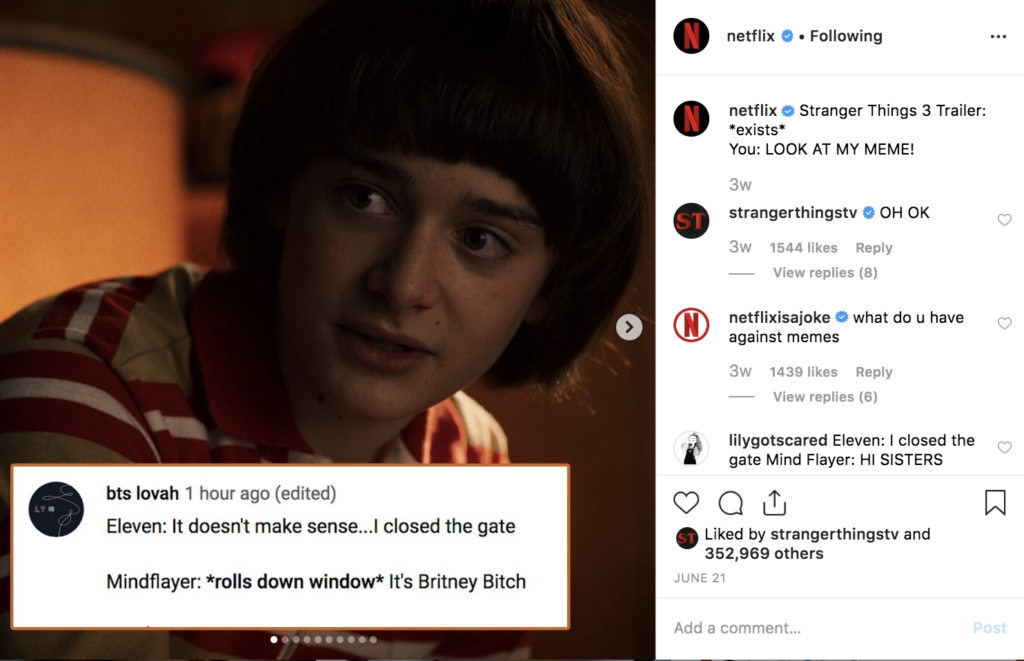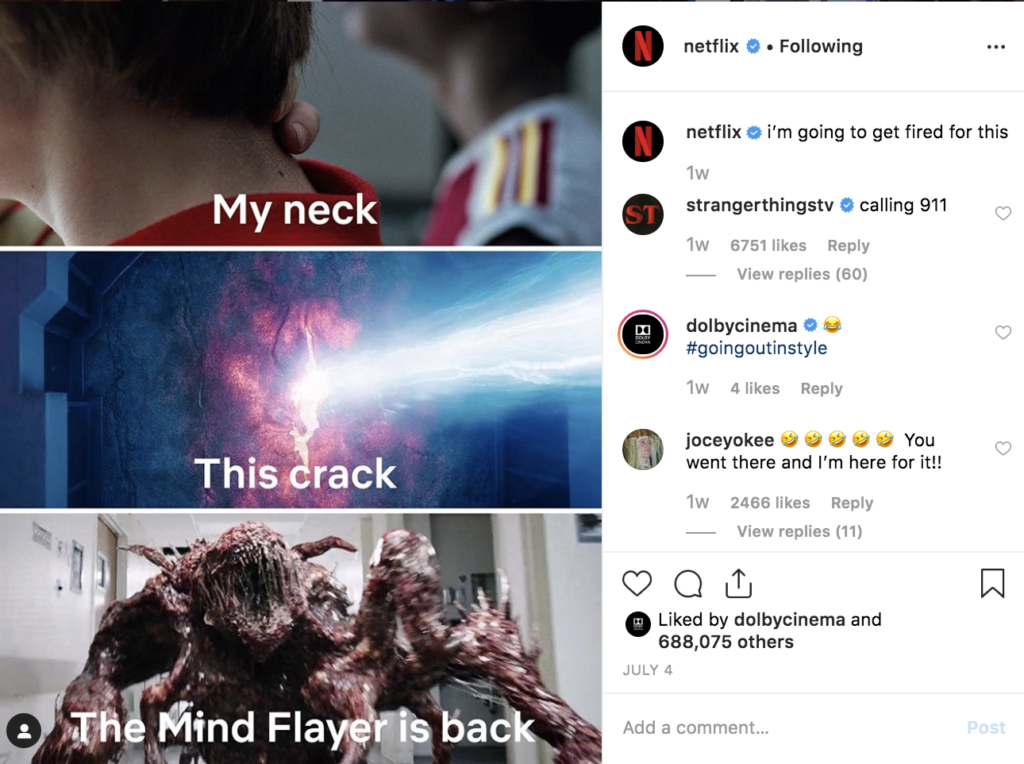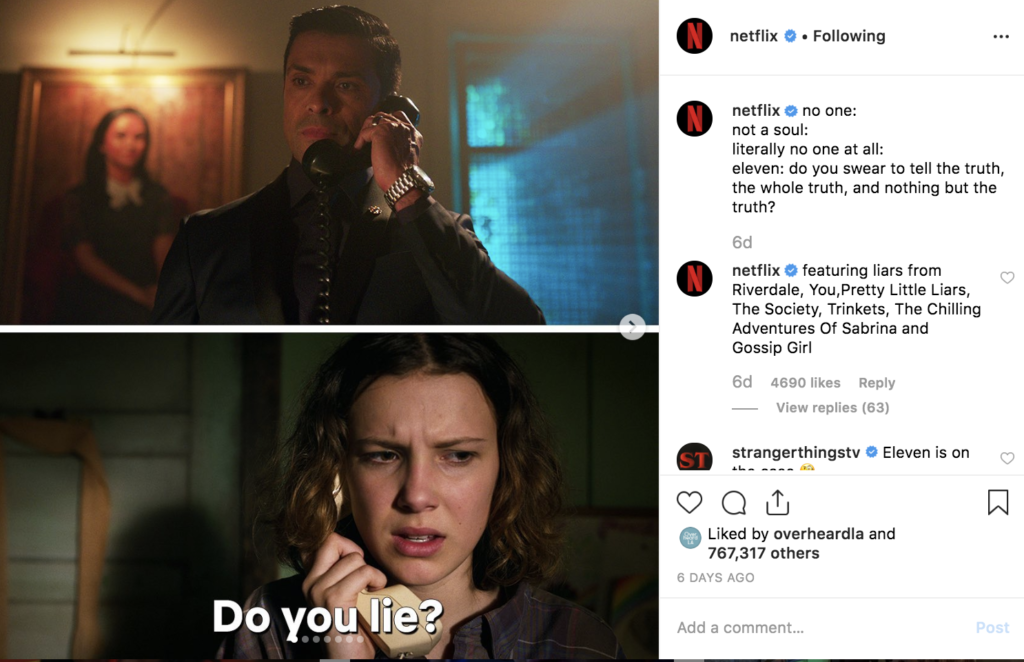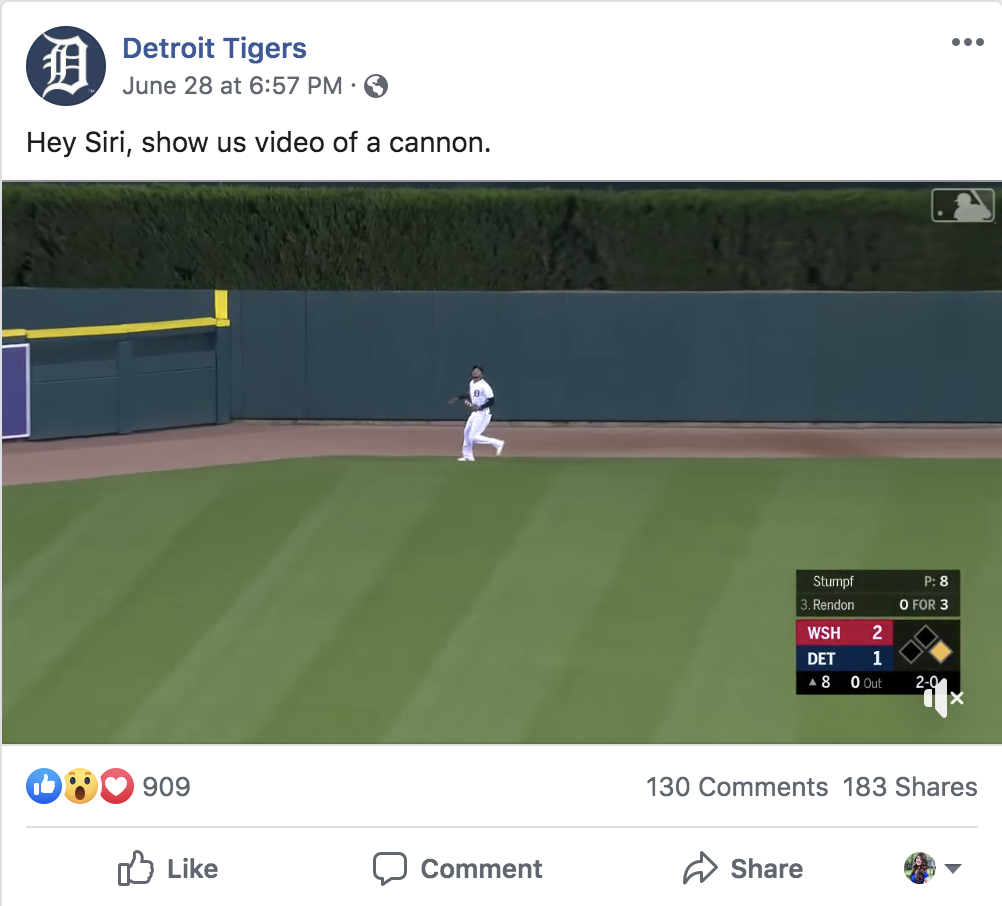Marshall McLuhan’s (1964) “Understanding Media: The Extensions of Man” long preceded the innovation fo the internet, much less the age of social media marketing. Despite it’s age, the work coined the phrase “The medium is the message” and explains many of the marketing activities on social media.
As brands chose voices to represent their organization online, few recognize the importance of McLuhan’s sentiment in their decisions. If the medium is the message and the medium at hand is social media, brands must cultivate a voice and style that fits the platform.
Today, social media is practically dominated by memes. A quick scroll through my own Instagram feed found that 25% of the first 30 posts were meme-based. Obviously, this is an anecdotal example. However, as brands shape their voices to match the medium carrying there messages, many shift towards a meme-centric voice.
When entertainment giant Netflix surged in popularity in the mid-2010’s, they not only disrupted the entertainment space, but also launched a new type of digital marketing. The meme-centric brand voice adopted by Netflix has been applauded by AdWeek and Fortune for recognizing the uses of the medium at play and the habits of social media users (Stevens, 2018 and Morris, 2019)
Netflix has gone so far as to leverage memes as a primary marketing tool for content releases. The streamers most recent major release, Stranger Things, spawned countless memes which contributed to pop culture discussion, created synergy across Netflix’s catalog and leveraged user-generated content.

Netflix leveraged tweets from fans to amplify social dialogue on Instagram (Netflix, n.d.) 
Netflix has made memes a staple of their marketing campaigns (Netflix, n.d.) 
Netflix used a meme to create synergy within its catalog of content (Netflix, n.d.)
Netflix’s success has sparked a cultural shift within the digital marketing community to include more meme-centric content into social media posts. Fellow entertainment organizations such as Hulu, HBO and NBC have all followed suit.
But while the occasional meme has added spice to many organization’s timelines, this shift towards informal tone has been adopted by some organizations in a way that may not fit the audience.
Take the MLB baseball team, the Detroit Tigers, for example. As a longtime follower of the team, this season’s new digital strategy has come across abrupt and trite in nature. Take a look at a few examples below:

An example of a mood meme on the Detroit Tigers’ Instagram page (Detroit Tigers, n.d.b) 
The Detroit Tigers have added captions that tap into pop culture, technology and trends (Detroit Tigers, n.d.a) 
The Detroit Tigers Instagram includes a nod to Backyard Baseball, a computer game popularized in the 1990s (Detroit Tigers, n.d.b)
All the more jarring is the fact that many of the page’s followers include older individuals that might not understand cultural memes and jargon popularized by the Millennials and Get Z social media users.
It is for this reason that I believe brands need to look back to McLuhan’s (1964) work and recognize that although “the medium is the message,” those media in question host different audiences. As such, brands should exercise caution in using meme-oriented messaging on social platforms.
References:
Detroit Tigers [@tigers]. (n.d.a) Posts [Facebook profile]. Retrieved from https://www.facebook.com/Tigers/
Detroit Tigers [@tigers] . (n.d.b) Posts [Instagram profile]. Retrieved from https://www.instagram.com/tigers/
HBO [@hbo]. (n.d.) Posts [Instagram profile]. Retrieved from https://www.instagram.com/hbo/
Hulu [@hulu]. (n.d.) Posts [Instagram profile]. Retrieved from https://www.instagram.com/hulu/
McLuhan, M. (1964). Understanding media: The extensions of man. New York: McGraw-Hill.
Morris, C. (2019). Sass as a strategy: How Netflix’s Twitter became just as entertaining as shows and movies. Fortune. Retrieved from https://fortune.com/2019/04/05/netflix-social-media-strategy/
NBC Entertainment [@nbc]. (n.d.) Posts [Instagram profile]. Retrieved from https://www.instagram.com/nbc/
Netflix [@Netflix]. (n.d.) Posts [Instagram profile]. Retrieved from https://www.instagram.com/netflix/
Stevens, J. (2018). 5 social media marketing lessons from Netflix. AdWeek. Retrieved from https://www.adweek.com/creativity/5-social-media-marketing-lessons-from-netflix/
